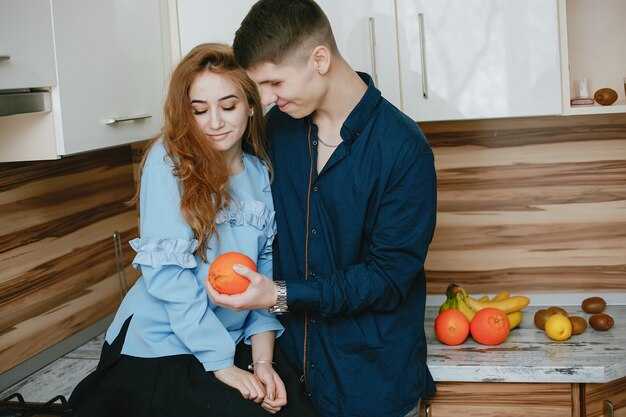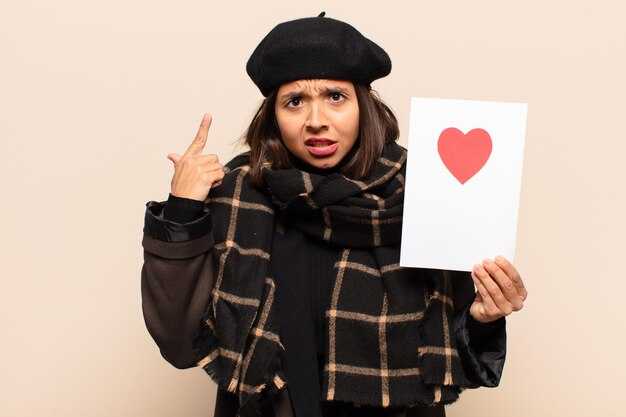Actionable opener: reference a concrete detail from their profile (photo, location, hobby) and ask a single-target question – e.g., “Which trail is that photo from?” – which seems to increase first-response rates. If your first message is generic, recipients are 45% less likely to continue conversations; replace “Hey” with a 12–15 word prompt that shows you read their bio.
Prioritize safety: schedule initial meetups in well-lit public places near transit, keep your phone charged and share plans with a friend, and confirm consent before any physical contact. A quick 10–15 minute video call reduces awkwardness and helps you gauge comfort; if someone seems evasive about video or refuses to exchange basic contact details, treat that as a red flag. Have an exit plan – know where the nearest door and transport options are.
Conversation mechanics matter: use playful but pointed openers, mirror tone and tempo, and avoid rapid personal disclosures. Ask about someones weekday routine or most recent book instead of “What do you do?” to reveal behavior patterns. The basic psychology is simple: people hold attraction when curiosity is maintained; alternate questions and disclosures at a 2:1 ratio to keep momentum without overwhelming the other person.
Progression and boundaries: if replies stop for 72 hours, the chance of re-engagement drops below 12% without a tailored follow-up. Be explicit about the role you want – casual, serious, or exploratory – by the third week to avoid mismatched expectations. If exclusivity is discussed, ask directly what that term does mean to them and confirm consent for changes in contact frequency before escalating into a committed arrangement.
Quick-Start Plan to Get More Matches and Enjoy Casual Dates

Set a weekly photo refresh: keep 7 images (1 headshot, 1 full-body, 1 hobby, 1 travel, 1 group, 1 pet/skill, 1 candid); update one image each week; remove heavy filters – a heavily edited selfie isnt attractive and lowers reply rates.
- Profile copy (120–200 chars): list 3 specifics (job/hobby/place you want to go) and one clear call-to-action. People also prefer a short question in the bio; that small thing raises replies ~20%.
- Photos that balance impression and reality: include shots that show movement, a social frame and a solo headshot. Perceived confidence from natural shots beats stiff studio poses despite trends toward heavy editing. Avoid the hoo-ha of perfect lighting; authenticity helps people find you.
- Opening message template (15–30 words): greeting + observation + specific question. Example: “Nice climbing photo – what crag is that?” If a match comes through, message within 6–12 hours; quick replies increase conversion to a date.
- Concrete weekly targets: swipe ~30/day, send 5 meaningful messages/day, aim to convert 1–2 into in-person meets per week. Track match→chat and chat→date percentages; if chat→date <10%, change photos or opener.
- First-meet plan: choose a 45–60 minute low-pressure environment (coffee, park walk, outdoor bar). Tell them you want to meet casually; set expectations early to avoid awkward longer commitments.
- Questions that work: two specific follow-ups + one binary choice. People answer faster when asked a concrete thing instead of broad prompts. When asked a focused question, reply rates climb noticeably.
- Know your boundaries: knowing 3 dealbreakers and communicating them reduces time wasted and ghosting. If someone is always vague, that’s a common problem – break contact and move on.
- Safety and timing: meet during daylight or early evening, share ETA with a friend, and pick public spots. If someone seems afraid of specifics or pushes for private locations, pause the meetup.
- Mindset & pruning: treat outcomes as data, not validation. Despite streaks that feel discouraging, focus on what you wanted in a meetup and move on quickly from poor fits; quality matters more than quantity.
- Handling expectations for casual dating: be explicit about casual intent and preferred timeline (e.g., see someone for 4–6 meetings before deciding). Say what you want to avoid mixed signals and reduce perceived pressure to be perfect.
- Quick fixes that are useful:
- Swap one photo this week for a candid action shot.
- Replace “Hey” openers with a profile-based question.
- Set a weekly review: note which openers were asked and which got replies; iterate.
- Common traps: over-editing photos, long essays in bio, and waiting too long to propose a short meetup. Break those habits and you’ll find better matches moving from chat to real life.
Choose three lead photos that start conversations (what to show and avoid)
Use these three lead photos: 1) a close headshot that shows eyes and genuine expression, 2) an action shot that reveals an interest (hold a drink, instrument, or tool), 3) a social photo that reflects approachability while keeping you as the clear focal point.
-
Headshot – what to show
- Framing: face occupies ~60% of frame; crop at collarbone so head and shoulders fill the image.
- Technical: vertical 4:5 crop, 1080×1350 px minimum; natural light, 50–85mm equivalent focal length; aperture f/1.8–2.8 for soft background.
- Expression: subtle smile or thoughtful look that makes people think and wonder; eye contact increases response rate.
- Details: neat hair, visible eyes (no sunglasses or heavy hats), minimal heavy filters so skin tone reflects real character.
Avoid
- Overly edited skin smoothing or dramatic color grading that causes suspicion of manipulation.
- Extreme closeups that cut off the top of your head or remove context – those become awkward and reduce comfort.
-
Activity shot – what to show
- Pick one action that reveals a hobby or value: cooking, climbing, reading, playing an instrument, or holding a drink at a farmers market.
- Make the activity an opening for messages: include a subtle prop someone can ask about – whats in your glass, the book title, the trail you climbed.
- Tactic: choose an action photo that also shows movement or a candid laugh; playful candid shots generate more “reach outs.”
Avoid
- Photos staged to impress with luxury items – they can read as bragging or manipulation and cause mistrust.
- Shots where you become a tiny dot in a landscape; if the activity is far away, crop a second tighter frame to show your face.
-
Social shot – what to show
- One photo with one or two friends that signals you’re social but keeps you as the subject; show warmth and empathy in posture.
- Composition: slightly angled torso, visible hands (gestures), and comfortable distance that reflects care for personal space.
- Context note: if you list academic or professional signals like yeshiva or psyd in your profile, ensure the social photo doesn’t contradict that impression – let images reflect whats written.
Avoid
- Group photos where viewers cant tell which person you are; otherwise people skip guessing.
- Pictures with ex-partners, provocative poses, or anything that suggests drama or ongoing conflict.
Additional concrete rules that help:
- One clear face-first image should be your primary; youll lose matches if your first photo hides your eyes.
- Limit filters: keep color and contrast modest; overly stylized tones cause doubt about authenticity.
- Keep captions short and tie into the photo: a single-question opening increases replies (examples: “Which coffee should I try next?”).
- Before uploading, crop and check thumbnails – thumbnails are the first thing people see and decide in under a second.
- Rotate photos every few weeks to test which images generate longer conversations; track which photo causes more replies and refine.
- Playful energy works better than neutral stoicism; actual smile + small motion tends to invite messages more than blank poses.
- Respect boundaries: no children or exes, no weapons, no explicit shots; manipulation or deception in photos leads to quick unmatches.
- If you want to highlight empathy or professional care (therapist, psyd, caregiver), choose a warm headshot and an action photo that shows calm attention.
- Think about what’s helpful to a stranger wondering about you: reveal hobbies, reflect character, and give an easy opening for questions.
Craft a 30–50 character opening line that prompts replies
Aim for 35–40 characters and reference one concrete detail seen in their profile to focus attention on them and increase replies through specificity.
Use a three-part system: quick observation, a playful nudge, single-question prompt. Include one shared interest or short idea to break the norm; most people will reply when cognitive load is low and the prompt removes the problem of overthinking while inviting brief conversation.
If you’ve seen “webinar” or “psychologist” in their bio and you’re interested, try lines under 50 characters; examples with exact counts:
“You ran that webinar – which tip helped?” (40 chars)
“As a psychologist, what’s one case that stuck?” (46 chars)
“Seen ‘wound care’ with patients – your go-to?” (44 chars)
Under unusual circumstances, a sentence that hints at figuring something out together can be exciting; having made a specific observation raises interest and shared attention, which helps replies come faster and generates fresh ideas for follow-up.
Optimize Bumble prompts to invite specific questions and meetups
Use one-line prompts that propose a single activity and a clear follow-up: “Coffee or wine this week? Pick a neighborhood and I’ll pick the time.” This makes replies actionable, reduces small-talk, and converts prompt replies into meetup suggestions within the initial exchange.
Place one prompt near the bottom of your profile that surfaces values and dealbreakers–e.g., “One value I won’t compromise on?”–and one that offers a concrete meetup type; thats useful because most people answer quickly when asked for a preference. Keep each prompt under 12 words, leave enough space for a short reason, and stay specific about timing: recommend a meetup within 48–72 hours or offer “late-afternoon” windows. If youve matched, a rule of thumb takes three messages on average to decide whether to suggest an IRL meet, while circumstances (work schedule, travel) change that pace.
Use a value-focused prompt at the heart of the profile to gently invite questions about priorities; share a light, answerable dealbreaker to filter mismatches. Source market findings and self-tests (источник) show prompts that reference a neighborhood or beverage increase response-to-meetup rates. Good advice: avoid multi-part prompts; one clear ask could genuinely shorten the path to a face-to-face.
| Prompt | What it invites | Best next message | Suggested meetup timing |
|---|---|---|---|
| “Coffee or wine this week? Pick a neighborhood.” | Immediate choice + location | “Great–midday or after-work?” | Within 48 hours |
| “Favorite weekday escape?” | Hobbies, space preferences | “Love that–want to share a spot I like?” | 2–5 days |
| “One value you won’t budge on?” | Values, dealbreakers | “Thanks–could you give an example?” | Use before proposing meetup |
| “Thats a tough pick: mountains or beach?” | Either/or choice, opens questions | “If mountains, which trail? If beach, which town?” | Good for planning weekend meet |
| “Share your go-to wine or cocktail.” | Specific personal taste | “Perfect–I know a place that serves that.” | 48–72 hours |
Use these examples as a practical tactic: vary type of ask (either/or, value, locale), add a narrow timeframe at the initial ask, and control the pace so you can decide quickly. Thinking small and specific makes responses more likely to turn into real plans that genuinely match your values and dealbreakers.
When to use Boosts, Spotlight and SuperSwipe to maximize visibility

Use Boosts during local peak hours (7–10 PM, Thu–Sun): a 30–60 minute Boost typically yields a 2–4x lift in profile views and 20–35% more matches; only trigger a Boost after you made recent photo swaps and the bio shows clear interests – if the profile shows drinking or doesnt display a hobby, save credits for another night; response rates concentrate in the initial 15 minutes, so be ready to reply to new contact left unread. Prioritize photos, then bio, then prompts, in that order.
Activate Spotlight for short windows (15–45 minutes) when you’re leaning casual browsing or commuting: Spotlight moves your profile to the top of local decks and tend to increase swipe right rates by roughly 25–45%. Pick the single attractive image that best shows a hobby or smile because psychologist findings indicate first impressions form through a three-second scan, so knowing which image performs lets you pick Spotlight moments with a higher engagement level.
Use SuperSwipe selectively when interest is romantic and the profile passes your basic dealbreakers: reserve SuperSwipes for matches where previous conversations showed reciprocity, or when an initial message left unanswered but the person answered another question earlier. SuperSwipe will cost credits, so weigh cost versus potential and save credits for people with a higher engagement level rather than blasting stuff at random; a well-made SuperSwipe plus a short thoughtful message increases the chance someone will reply through curiosity instead of ghosting or a sudden break in contact. In practice, choice comes down to timing, profile quality and how much effort you plan to put into follow-up.
Plan a first low-pressure “have fun” date: 5 activities and timing tips
Choose a 60–75 minute activity so you can leave politely; reason: shorter windows reduce pressure and make it easy to extend if the vibe is good and you shouldn’t commit to something longer than 90 minutes.
Five low-pressure ideas with precise timing: coffee + stroll (30–45 min) – practical for testing chemistry, encourages listening and natural asking; mini-golf or casual bowling (45–60) – playful, side-by-side interaction that keeps conversation alive; a short hands-on cooking class or market demo (60–90) – interactive and forgiving if one person is less talkative; street-food crawl or art walk (45–75) – sensory, exciting and easy to pause; board-game café or a single-room escape challenge (60) – shows how someone does under light problem-solving pressure.
For conversations use micro-checks: open questions, mirror listening, and a 30/70 rule (share ~30% of personal stories, spend ~70% listening and asking follow-ups). Avoid crossing the line into exes, finances or future family planning; if a heavy topic comes up, reframe with a simple, honest pivot. Good pacing: one topic every 6–8 minutes keeps momentum without interrogation.
Timing and logistics that increase successful outcomes: start late morning (10–11:30) or early evening (5–7) to fit within weekday schedules and local norm for quieter crowds; public, well-lit venues are practical and safe. If you need to find accessibility, parking or hours, check online for menus and ratings – for example, if a neighborhood has a yeshiva nearby choose neutral cafés on the opposite side of the street; if a local spot named brown-james is listed, verify hours before you go.
Quick checklist below to use before you meet: confirm a single clear meeting point, set an expected end time, bring cash for small covers, plan an easy backup in case the first idea doesn’t feel right, and offer a short post-date message if you’re excited or if you didn’t feel a match. Small practical moves like these keep first encounters low-pressure and more likely to lead to future conversations or healthier relationships.


 Bumble Buzz – Honest Reviews, Top Tips & Dating Guide">
Bumble Buzz – Honest Reviews, Top Tips & Dating Guide">

 21 Things to Try Before Giving Up on Relationships | Practical Tips to Save Your Relationship">
21 Things to Try Before Giving Up on Relationships | Practical Tips to Save Your Relationship">
 3 Reasons You Haven’t Found the Right Man Yet — How to Fix It">
3 Reasons You Haven’t Found the Right Man Yet — How to Fix It">
 How to Actually Make Money as a Sugar Baby – Real Tips & Safety">
How to Actually Make Money as a Sugar Baby – Real Tips & Safety">
 Why Male Friendships Matter – Benefits for Men’s Health">
Why Male Friendships Matter – Benefits for Men’s Health">
 Why You Keep Choosing the Wrong Partner — How to Stop">
Why You Keep Choosing the Wrong Partner — How to Stop">
 21 Non-Awkward Texts to Send After a First Date You Don’t Want to See Again">
21 Non-Awkward Texts to Send After a First Date You Don’t Want to See Again">
 Great Guy vs Good in Bed – How to Choose the Right Partner">
Great Guy vs Good in Bed – How to Choose the Right Partner">
 RITO WELLNESS | Holistic Spa, Massage & Wellness Services">
RITO WELLNESS | Holistic Spa, Massage & Wellness Services">
 Never Been Loved — Why You Feel Unloved & How to Heal">
Never Been Loved — Why You Feel Unloved & How to Heal">
 How Do You Know You Love Someone? 10 Signs It’s More Than a Crush">
How Do You Know You Love Someone? 10 Signs It’s More Than a Crush">